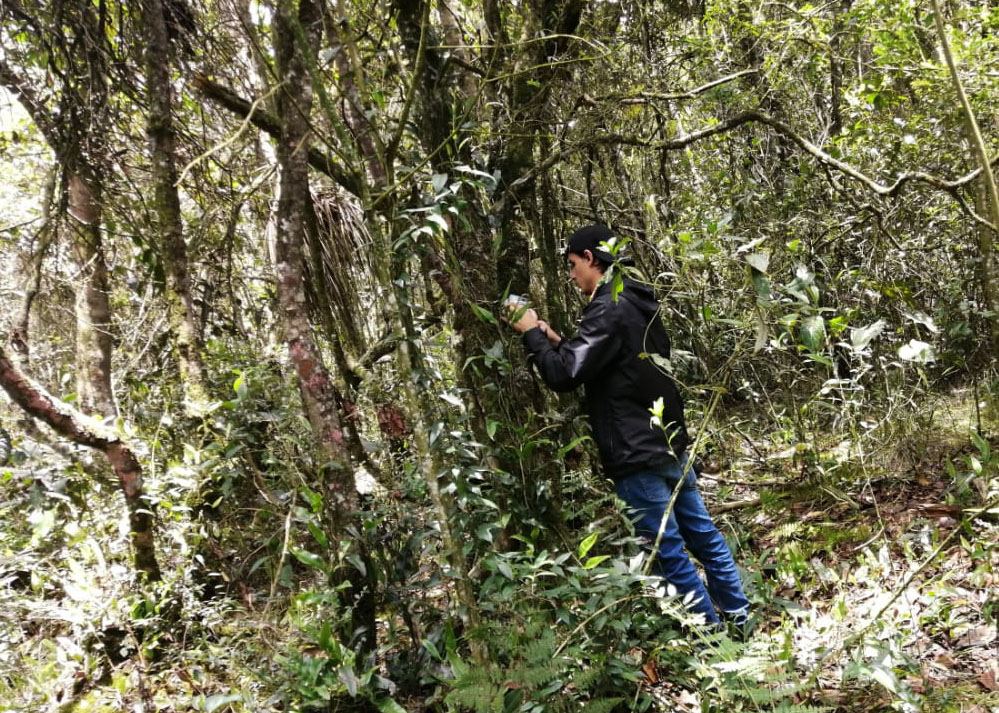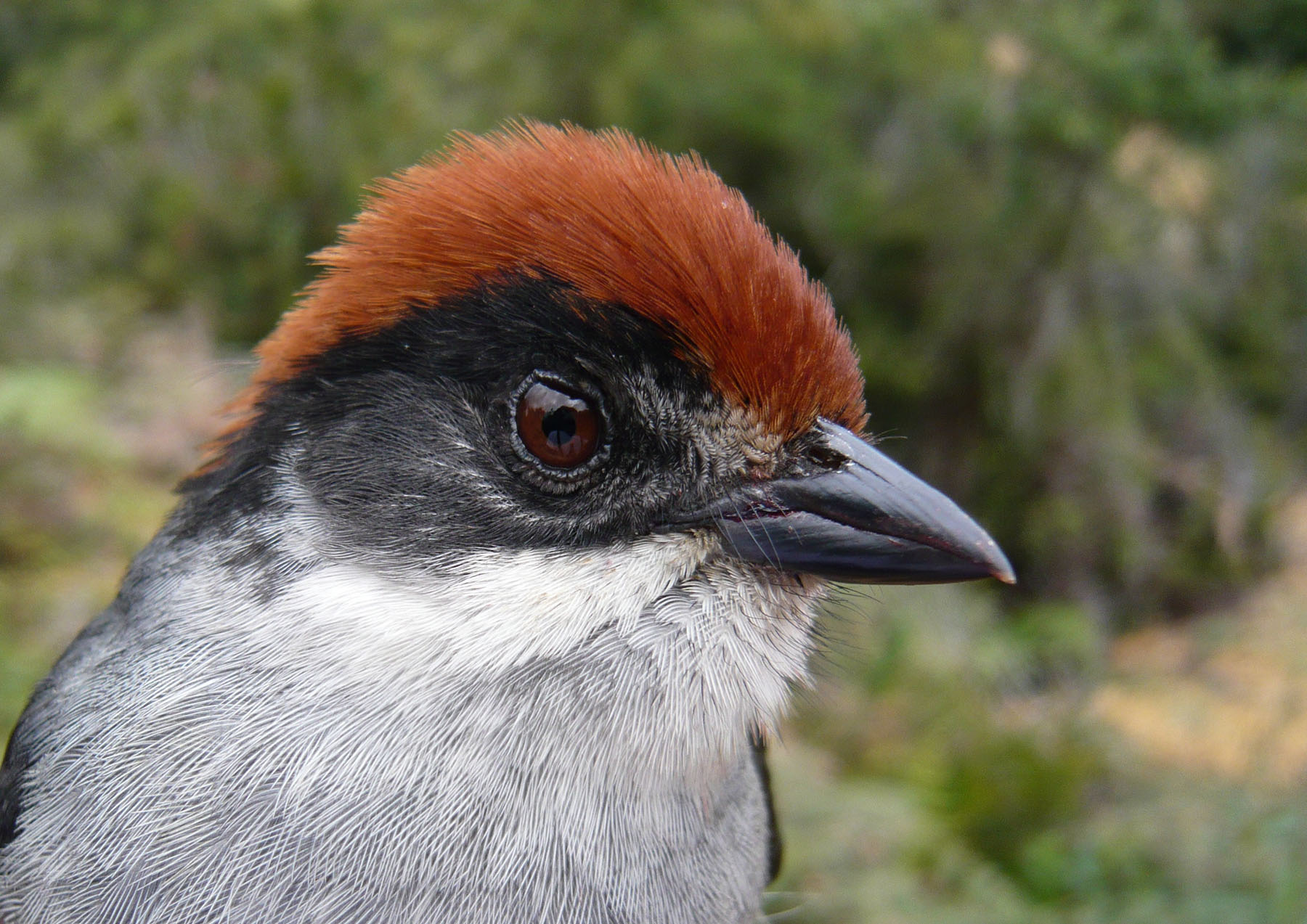The Antioquia Brushfinch (Atlapetes blancae) is a range restricted bird limited to a plateau in the Central Andes of Colombia, just 45 minutes from the city of Medellín, Colombia. This species was described in 2007 by a British ornithologist based on three museum specimens collected in 1971 by the brothers of a Christian organization committed to education (Lasallian Brothers). Although the description of the species sparked the interest of many birders in this region, various expeditions to find it failed. The lack of records in a highly transformed region led researchers to believe the species was totally or partially extinct. Unexpectedly, in 2018, Rodolfo Correa, an agronomy engineer and regional conservation activist, observed an individual foraging on a shrub next to the road toward his home, where neither him, nor anyone, hoped to find it.

The species’ rediscovery allowed the study of its natural history: how and when they reproduce, how they sing, and what they eat. One of the most surprising discoveries is that the habitat used by the species corresponds to shrubland areas explaining why many expeditions to the last forest remnants in the region failed. The main motivation for our research was to understand the relationships between the species and its physical environment, particularly with topography and vegetation using a non-invasive method. Based on the recent findings about the songs and reproductive period of the species, we decided to carry out an acoustic monitoring exercise with a set of 20 automatic recorders, that were cycled to cover a total of 80 survey sites over a month.
We only found the species in seven out of the 80 sites, indicating a low occupancy. The species’ occupancy increases in areas with high water accumulation (concave terrain) and with a minimum cover of shrubby vegetation. The constant transformation of the landscape due to agricultural expansion can have negative impacts on the species, and presents an interesting conservation alternative where shrubby vegetation, instead of forest remnants, need to be protected, which should be easier to achieve.
Our results provide the first occupancy estimates of the species as well as a non-invasive and easy-to-implement method to monitor the status of the species. The current situation of the Antioquia Brushfinch, at least the southern part of its distribution, is critical, and it’s necessary to implement conservation strategies that minimize the transformation of its habitat. The Antioquia Brushfinch is a symbol of resilience in a region with clear development interests, but it also represents an opportunity for conciliation between the use of natural resources and the protection of biodiversity.
Learn more about this project through a storymap at: https://www.arcgis.com/apps/Cascade/index.html?appid=0a619c1e1ed14c12affc620f2296b112
Mauricio Díaz-Vallejo
Biólogo, Universidad de Antioquia
Estudiante Magister en Ciencias
Laboratorio de Bioclimatología
INECOL – Instituto de Ecología, A.C.
The results of this study were recently published in the Journal of Field Ornithology:
Díaz-Vallejo, M., S. Chaparro-Herrera, A. Lopera-Salazar, M. Castaño-Díaz, R. Correa, and J. L. Parra. 2023. Use of acoustic monitoring to estimate occupancy of the Antioquia Brushfinch (Atlapetes blancae), a critically endangered species, in San Pedro de los Milagros, Antioquia. Journal of Field Ornithology 94(2):4. https://doi.org/10.5751/JFO-00248-940204.
Header photo: Antioquia Brushfinch (Atlapetes blancae). Photo by Sergio Chaparro-Herrera.


